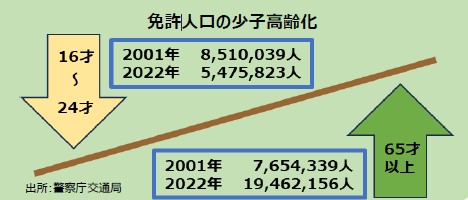For the first time since the start of statistics in 1899, the number of births has fallen below 800,000. The number of births in 2022 was 777,471, a 5.0% decrease from the previous year. This marks the first time it has dipped below 800,000 since the government began population statistics in 1899. For reference, the birthrate at that time was 1,386,981. From 2015, the number of births has continued to set record lows for seven consecutive years, and the declining birthrate is accelerating, advancing at a pace about 10 years ahead of government estimates.
On the other hand, the number of deaths also reached to a post-war record high, with a 9.0% increase from the previous year to 1,568,961. As a result, the natural population decrease for the year 2022 amounted to 798,214 people, nearly equivalent to the population of Saga Prefecture. It is indeed alarming to think that such a large part of the population has disappeared in just one year.
Japan’s population reached its peak at 128.08 million in 2008, but since then, it has been rapidly declining. Correspondingly, the working-age population has also been decreasing. The working-age population refers to the population segment that plays a central role in the economic activities of Japan, consisting of individuals aged 15 and above but less than 65. In the year 2000, the working-age population stood at 86.22 million, but in the last year (2022), it has decreased to 74.96 million, a staggering decline of 11.26 million.
When focusing on the automotive industry, the aging of the license-holding population becomes a serious concern. The license-holding population itself peaked in 2018 and has since been on a gradual decline, not as steep as the overall population decline mentioned earlier but concerning in its decrease.

As shown in the table, while the population aged 16 to 24, who obtain licenses and are likely to own cars for a long time, has decreased by 3.03 million over 20 years, the population aged 65 and above, who are nearing the end of their lives and may consider returning their licenses in a few years, has increased by a significant 11.8 million over the same period. This aging of the license-holding population is becoming a serious issue.
In summary, due to the decrease in the working-age population and the aging of the license-holding population, it seems inevitable that the new and used car market will continue to contract in the future.